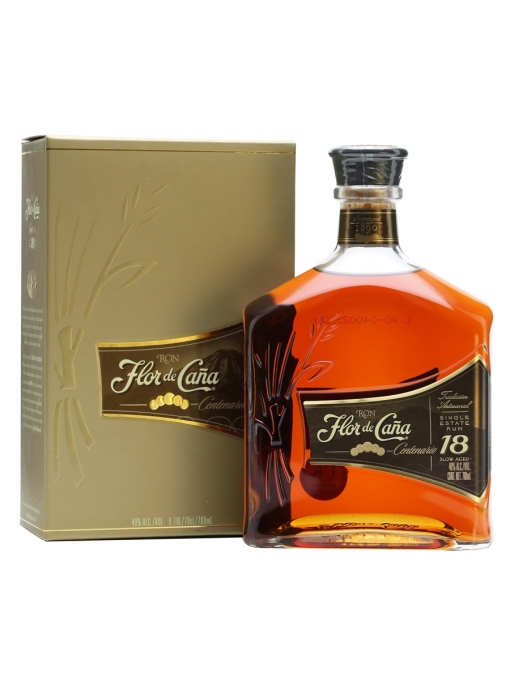By Tyler Derksen
Last Thursday I had the privilege of attending a Flor de Caña rum tasting at Murrieta’s, hosted by enthusiastic Brand Ambassador Jeffrey Meyers. I’m going to level with you: I’m relatively new to the world of rum. Until recently, much of my experience has been limited to highballs, but I am thoroughly enjoying learning more about this surprisingly complex sugar cane-based spirit. For whatever reason, I have generally associated rum with two things: the Pirates of the Caribbean movie and the Caribbean islands (although now that I write this, I’m guessing the former informs the latter). Flor de Caña, however, is produced in the Central American country of Nicaragua, most definitely not an island or a Disney franchise of any kind.

If you look closely, you’ll see the volcano… (Photo Credit: The Whisky Exchange)
Flor de Caña traces its roots back 125 years, when was founded by the Pellas family, who moved to Nicaragua from Italy in 1875. Originally intending to found a sugar cane plantation, the family began to distill spirit to celebrate the end of the harvest season with the area’s farmers. Their distillation facility is located at the base of the San Cristobal volcano, which is featured prominently on its label. Despite producing rum for local farmers for many years previous, it was not until 1937 that product from Flor de Caña became available for purchase by the public, and even then it was only in Nicaragua. The company now exports internationally, remains family-owned and is now on its fifth generation of rum producers, which is a remarkable feat in today’s age of beverage conglomerations.
The name Flor de Caña translates to “flower of the cane”, which is a tip-of-the-hat to the practice of harvesting the sugar cane for rum distillation when the flowers that grow on it bloom. Jeffrey Meyers took great pride in the Flor de Caña production process and emphasized that the distillery uses 100% molasses (a byproduct of the sugar refining process) for the production of its rum and does not use any added already-refined sugar. Before being aged in American white oak ex-bourbon barrels, the spirit is distilled five times (which is, I think, the most that I have heard of a spirit being distilled and would almost surely result in a nearly neutral spirit pre-barrel maturation). So, how does it taste? Read the rest of this entry »



